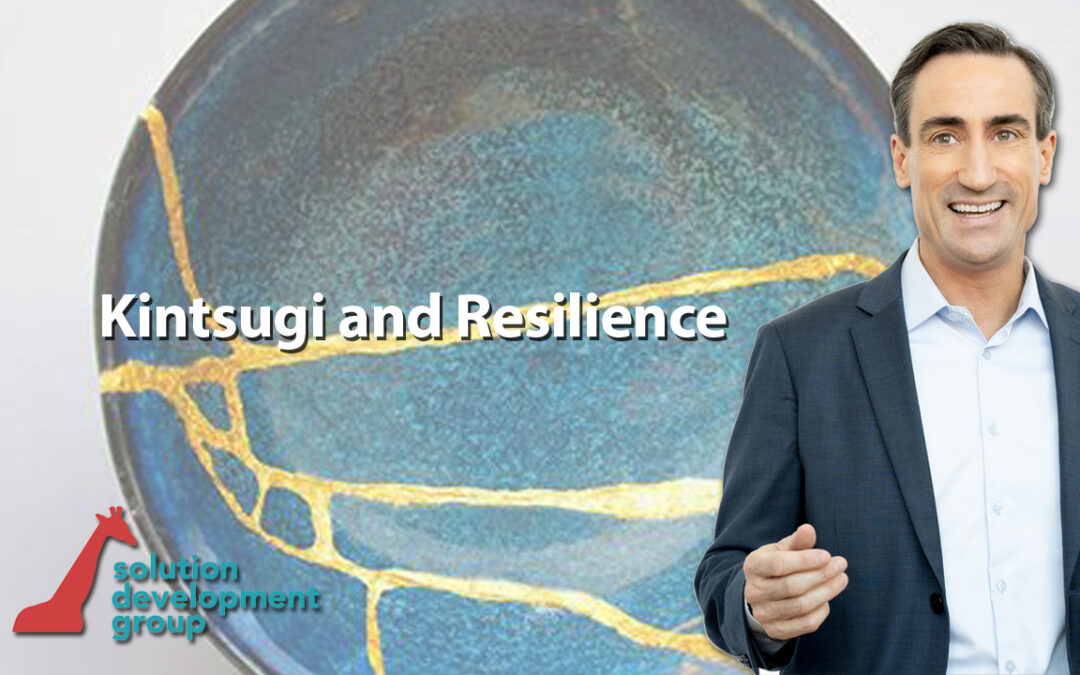What do resilience and an ancient Japanese art form have in common?
Quite a bit.
Hear me out.
The story begins in the 15th century with the famous shogun, Ashikaga Yoshimasa.
Yoshimasa had a favorite Chinese tea bowl. Sadly, it broke, so he had it sent off to China for repairs.
When the tea bowl returned from China, Yoshimasa was dismayed to discover that it had been repaired with ugly metal staples holding it together.
This prompted the Japanese craftsman and artisans of the day to develop a more aesthetically pleasing way to repair pottery and broken ceramics.
And so, the art form Kintsugi was born.
Kintsugi is the practice of joining up broken pottery using precious metals, such as gold or platinum.
Repairing objects this way draws your attention to the imperfections in the artwork. The eye is immediately attracted to where the pottery has been broken.
The philosophy behind Kintsugi aligns with the Japanese aesthetic known as wabi sabi, which is a world view centered on the acceptance of transience and imperfection (as opposed to the Western ideals of perfection, symmetry, and geometry).
This connects to some of the Buddhist concepts of impermanence, in that you can clearly see the history of these imperfect pieces.
Clearly, they’ve been broken. And, they’ve been repaired. And we don’t try to hide the fact. In fact, we draw attention to the flaws, and make them beautiful.
How does all of this relate within the context of resilience?
Think about the challenges that we’ve all experienced in our own lives, such as: losing loved ones, ending relationships, losing financial security, losing jobs, or leaving behind one’s home country.
Resilience is the skill of being able to celebrate all those challenges we’re bound to have in life.
There are going to be times in your life when you might feel like you’ve been broken by difficulty and pain.
If we are able to come back from those experiences (barring outright abuse or trauma, of course) sometimes those periods of challenge add value and meaning to your life.
Kintsugi takes an object from being ordinary to even more beautiful than it was before it was broken.
Similarly, resilience is the act of looking back on our experiences in life and recognizing how what we learned from those experiences contribute to who we are today, even if they were difficult at the time.
I think Kintsugi, the art form, is just such a poetic manifestation of how we can view our lives – cracks and all.
We’ll talk more about this and other ways to keep and strengthen your own resilience in an upcoming free webinar. Please email randall@solutiondevelopmentgroup.com for more information and to register.


Recent Comments